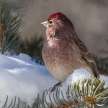
The short-tailed albatros (Phoebastria albatrus), is an exceptionally endangered seabird in the North Pacific. This also displays behavioural and morphological differences of albatrosses in the Southern Ocean, but similar to other albatrosses in the north Pacific. The German naturalist Peter Simon Pallas described it from skins obtained by Georg Wilhelm Steller (after which the other common name derives). Trafficking of feathers was formerly normal to the verge of extinction but health has been improving lately. The short-tailed albatross is a medium-height albatross, with a wingspan of 215 to 230 cm 91, a length of 84 to 94 cm and a body weight of 4.3 to 8.5 kilogrammes. In normal measurements the bill averages 12.7–15.2 cm in height; the tail averages 14–15.2 cm in width; the tarsus is around 10 cm thick; and the wing chord is 51 cm long.
As an adult, her plumage is white overall, with feathers of black flight on her back, some covers and a black terminal ensemble. It has a nape, and a yellowish-stained hat. The bill is wide and white but older birds have a blue tip. The juveniles are an all-over brown colour, whitening in around 10 to 20 years as they mature. Within its range this can be distinguished from the other two species of albatross, the Laysan albatross and the blackfooted albatross by its larger size and pink bill as well as by its plumage detail. Unlike his name, his tail is no shorter than the Laysan or black-footed one, and considerably longer than the other Phoebastria family member's waved albatross.
Short-tailed albatrosses are now nesting on four islands, with some birds nesting in Torishima, and almost all the others breeding in the Senkaku at Minami-kojima. In the late 2000s a female-female pair began nesting on Kure but has not produced a viable egg so far. On 14 January 2011 a chick hatched at Halfway. Midway and Kure are both found in the northwest Hawaiian Islands. In 2012, a couple decided to incubat an egg on Muko-jima, on the Bonin Islands, Japan. In the non-breeding season, they scatter across the North Pacific, with males and juveniles clustering in the Bering Sea, and females feeding off Japan's coast and eastern Russia.
We can be found on both the Northeast and California. The short-tailed albatross is now listed on a number of US-dangered species lists, such as Oregon. The short-tailed albatross feeds primarily on fish, and will hunt ships for their discarded offal. Historically, this albatross, dubbed Miscanthus sinensis, used to breed on large open fields around the grass stand. The short-tailed albatross typically breeds first at 10 years of age. The short-tailed albatross lays a dirty-white one-egg clutch with red stripes, sometimes at the blunt end of the nest. The weight is usually 115 x 75 mm. The egg is incubated for 65 days on an equivalent basis. For both geners the eggs are incubated. The short-tailed albatross had come nearly, perilously, to extinction. They were hunted for their feathers on a relatively massive scale in the latter half of the 19th century, with some sources reporting hunts of more than 10 million birds.
By the 1930s the only surviving colony was in Torishima, and deforestation continued between 1927 and until 1933, when the Japanese government imposed a ban on deforestation to protect the birds, after which the albatrosses resumed breeding on the island. By this time the species was believed to be endangered and research was impossible at the onset of World War II. An American explorer landing on this island in 1949 deemed the species extinct but an estimated 50 people, most likely juveniles, survived at sea. We were held better when the birds arrived, and the returning birds laid the first egg in 1954. Albatross decoy variants were introduced on the island after it was discovered that this species was often enticed to breed, like other albatross species, when introduced into a community.
About the Creator
MB
I am a bird aficionado and really enjoy spotting them them on hikes. I greatly appreciate the variety of birds cross North America and the world. They are amazing and intelligent creatures, each so unique and with a wonderful life.






Comments
There are no comments for this story
Be the first to respond and start the conversation.